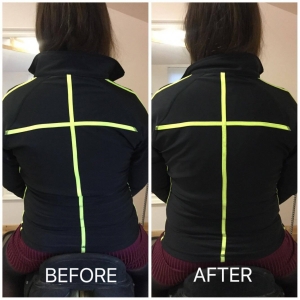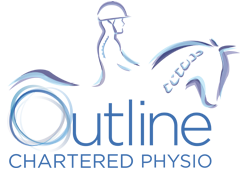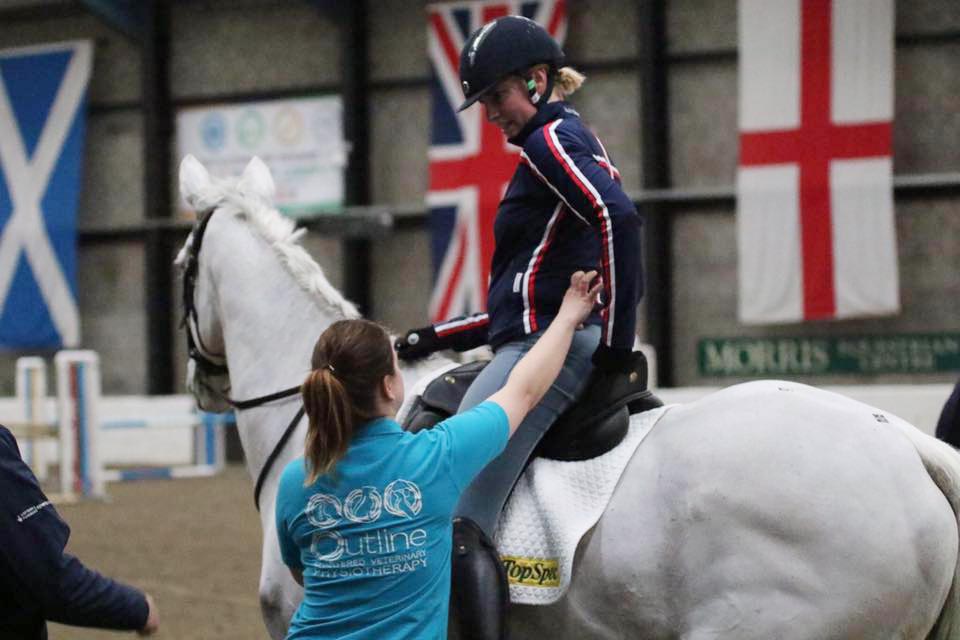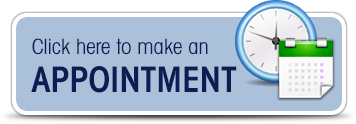#fortherider APT Cavalier
Rider Asymmetry
Hi everyone, my name is Robyn Dunn from Outline Chartered Physio. I am a Chartered Physiotherapist who specialises in horse and rider performance.
First of all I would LOVE to thank APT Cavalier for inviting us to be a part of their #fortherider campaign.
The Rider as an Athlete
Our mission here at Outline is to improve the health, wellbeing and performance of riders as well as their equine partners. It is so important that riders see themselves as an athlete too. All too often we take care of all of our horses needs and we forget about ourselves!
How many of you out there will happily fork out £££ a year for your horse to receive regular Physiotherapy but would never think to spend some of that on yourself? All to often I hear “oh I know I’m crooked in the saddle but it doesn’t matter” or “I just have to put up with my back pain when I ride”.
This thinking needs to change!
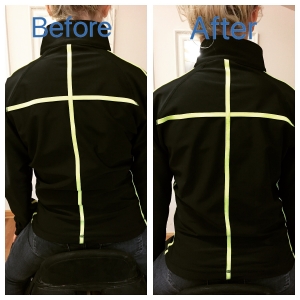
An Asymmetrical Rider = An Asymmetrical Horse
“The correct position: Where the rider achieves the greatest biomechanical advantage of movement without interfering adversely on the desired mechanics of the horse” – Unknown
There are lots of factors that can cause asymmetry within the human body:
- Injury and pain!
- Yard Duties – One of the obvious ones is mucking out and filling haynets! Often we do these jobs the same way every day!
- Sitting in the car – Do you feel that you sit evenly through your seat bones in the car? Or do you sit slightly to one side? I know I do!
- Sitting at your desk at home or work can cause poor posture and imbalances through your body!
- Looking down at your phone! Definitely a modern day problem! (I think we are all guilty of this!)
- Perhaps you take part in other sports such as badminton, hockey or curling? Some sports require you to use one side more than the other repetitively which can create asymmetry through the body.
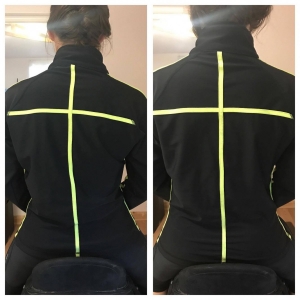
If we do all of these things all day every day how can we then expect to be straight and symmetrical as soon as we sit in the saddle?
When we sit crooked in the saddle we will have more weight on one seat bone compared to the other, favouring our ‘stronger’ side. Our body has to compensate for this in order to keep us in the saddle! If it didn’t, we would just fall off the side!
This then sets off a chain of imbalances through the body; we might, for example, find it harder to put one leg on or we might ‘fix’ through one hand on the rein, ultimately affecting our horses way of going too.
Recent research has proven that WE can be the reason for getting 2 marks less for the left hand pass compared to the right or consistently knocking a pole down from the right right compared to the left.
How can Physiotherapy improve your symmetry (and therefore, your performance!)?
Recent research has proven that Physiotherapy intervention can improve your symmetry in the saddle. It has also proven that increased symmetry improves the riders ability to correctly influence the horses way of going and, therefore, overall performance.
My job is to identify these asymmetries/imbalances and work to improve them; optimising the riders position and effectiveness in the saddle.
We perform a variety of tests to help figure out exactly what is going on within the body.
- Are there any tightnesses/restrictions?
- Are there any muscles which are weak or ‘switched off’?
- Where are the body’s compensations?
- Where is the body ‘cheating’?
- How does the left side compare to the right side?
Have a little look at our VLOG to get a little insight into how we assess our riders in the studio! CLICK HERE: Rider Symmetry VLOG
